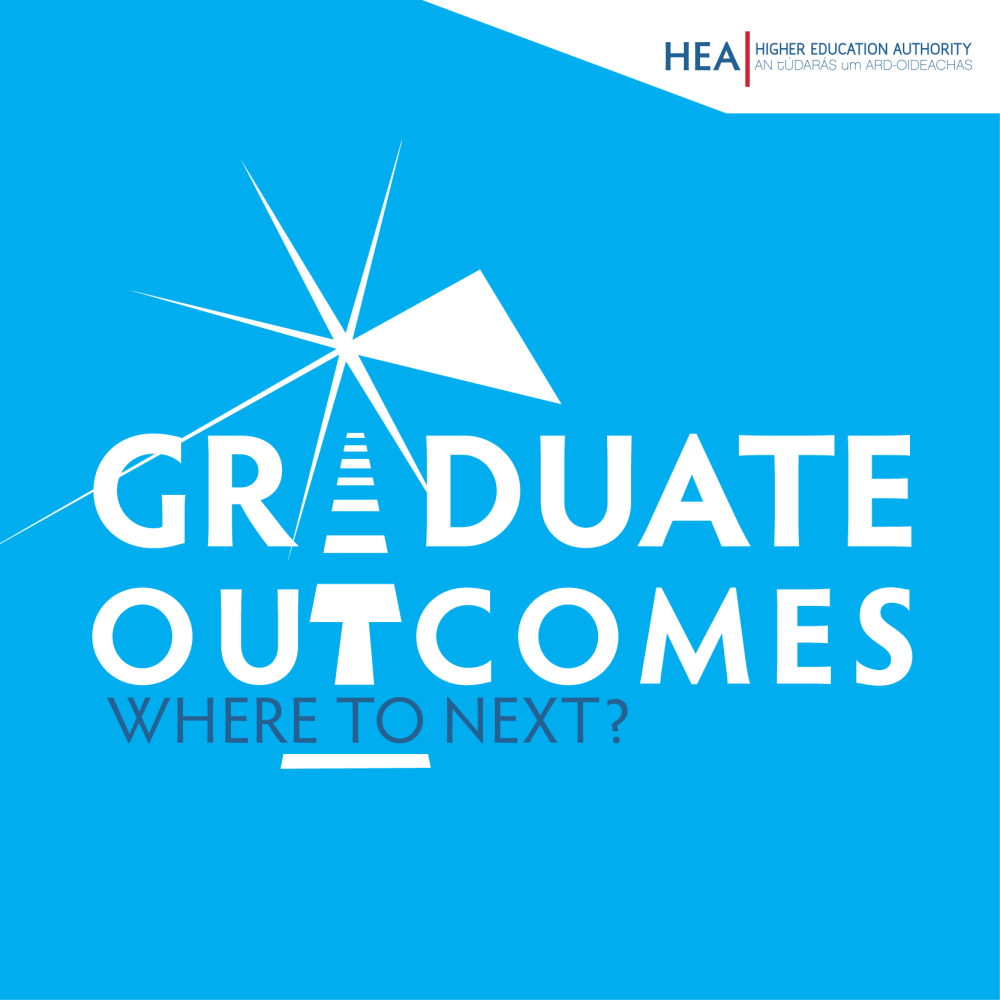Graduate Outcomes Survey Class of 2020 National Report
By Maura O'Shea
Posted: 7 February, 2022

More than three quarters of higher education students are in employment nine months after graduation, with employment highest amongst Education graduates and lowest for Arts & Humanities graduates.
However, almost 14% of graduates pursue further study nine months after graduation, with the highest proportion being graduates of Arts & Humanities and lowest from Education graduates.
These are among the findings of the Higher Education Authority’s Graduate Outcomes Survey, which is a nationally representative annual survey of graduates from 23 Higher Education Institutions (HEIs). Graduates are surveyed nine months after graduation. For the Class of 2020, the survey was distributed in Spring / Summer 2021, with a census date of 31 March 2021. For the Class of 2020, the response rate is 49%.
No data is available for the Class of 2019, as the timing of the survey coincided with the onset of COVID-19. To avoid placing an extra burden on students and institutes, the decision was made to cancel the Class of 2019 Graduate Outcomes Survey. As such, any comparisons made are between the Class of 2020 and the Class of 2018.
The survey found that:
· Overall, 75.9% of graduates are in employment nine months after graduation (down from 80.1% for the Class of 2018). Employment is highest among Education graduates (93.2%) and lowest for Arts & Humanities graduates (53.1%);
· The average full-time earnings for younger graduates is €32,596. ICT graduates have the highest proportion of graduates earning more than €40,000 nine months after graduation (44.1%);
· Nearly two-thirds (64.3%) of graduates are on Permanent or Open-Ended contracts (up from 61.9% for the Class of 2018). Permanent or Open-Ended contracts are most common in ICTs, and least common amongst Education graduates (42.2%).
· In terms of further study, 13.8% of graduates pursue further study nine months after graduation (up from 12.6% for the Class of 2018). The proportion pursuing further study is highest for Arts & Humanities graduates (27.4%) and lowest for Education graduates (2.9%).
· Of the 64,858 graduates across 23 HEIs, 53.3% identify as female and 46.7% identify as male.
· The most common fields of study are Business, Administration & Law (25.9%), Health & Welfare (15.1%), and Arts & Humanities (12.4%).
· The most common programme type is Undergraduate Honours Degrees (52.6%), followed by Taught Masters (23.0%).
Higher Education Authority CEO, Dr Alan Wall, said: “This comprehensive report provides institutions, policy makers and future graduates with a thorough analysis of early career and further study outcomes after graduation. This year’s report is particularly relevant as it shows the impact of the Covid-19 pandemic on our recent graduates. This detailed dataset will help institutions and other stakeholders in providing students with appropriate career advice and relevant information on their course choices.”
Minister for Further and Higher Education, Research, Science and Innovation, Simon Harris TD, welcomed this report which he said ‘provides key information on the destinations and outcomes for our recent graduates’.
“It gives new insights about the impact of Covid-19 on student employment and further study, during a period of unprecedented change in key parts of the economy. The interactive format of the report gives easy access to a wealth of useful data of interest to our future graduates on where their studies might take them in their future careers or continued learning.”
The findings of this report show that the Covid-19 pandemic has affected graduate employment. In terms of the main destination of all graduates, there has been a decrease in employment compared with the Class of 2018. For 2020 graduates, 76% were working or due to start a job (compared to 80% for 2018 graduates), 14% were engaged in further study (compared to 13% for 2018 graduates), 8% were unemployed (compared to 4% for 2018 graduates) and 2% were engaged in ‘other’ activities (compared to 3% for 2018 graduates).
ENDS
NOTES TO EDITOR:
This year, the Graduate Outcomes Survey – Class of 2020 national report will be available in the form of an interactive, digital report, published on the HEA website. This includes the use of interactive tables, and a detailed dashboard accompanying the national report, facilitating more detailed analyses. This is a shift away from the physical hardcopies produced in previous years.


